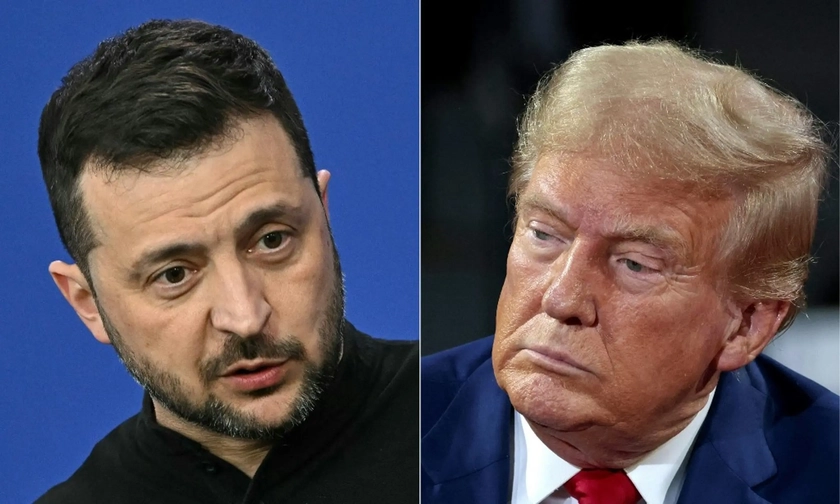Richard Haass, former President of the Council of Foreign Relations, and Charles Kupchan, a senior fellow of the Council, have just published a truly scary article, “Redefining Success in Ukraine.” Pretty much everything is wrong in this article. Last spring, together with Putin’s prime US advocate Thomas Graham, Senior Director for Russia in the National Security Council under George W. Bush, Haass and Kupchan met with Russian Foreign Minister Sergey Lavrov, who was sanctioned by the United States.
As Senior Director for Europe in the National Security Council in the Obama administration, Kupchan took pride in blocking any delivery of lethal arms to Ukraine, claiming that he helped to avoid World War III, while in fact he facilitated Russia’s invasion in 2022. At that time, he was supported by President Barack Obama, while Vice President Joe Biden and his assistant Anthony Blinken wanted to deliver arms.
JOIN US ON TELEGRAM
Follow our coverage of the war on the @Kyivpost_official.
Strangely, Haass and Kupchan appear unaware that Putin has violated virtually all relevant agreements and lies persistently. It makes no sense to negotiate with such a man, but they do not even mention this aspect, indicating that they are not at liberty to discuss talks with Putin.
The essence of their proposal is: “The United States should begin consultations with Ukraine and its European partners on a strategy centered on Ukraine’s readiness to negotiate a cease-fire with Russia and to simultaneously switch its military emphasis from offense to defense.”

Realpolitik and Betrayal
This proposal makes no sense. First of all, Russia would just use a ceasefire to rearm, and the authors argue that “time will not be on Ukraine’s side if a high-intensity war drags on indefinitely...” It would seem that they want Ukraine to lose. Yet they want to “make clear to Russia that it cannot simply hope to outlast Ukraine.” These two assumptions are contradictory.
Haass and Kupchan proceed: “One option for the West is to do more of the same... The West can send more tanks, long-range missiles, and eventually F-16 fighter jets. But there is no silver bullet capable of turning the tide on the battlefield.” Don’t they know that this has not been done? A pro-Ukrainian argument is that this should finally be done. For no good reason, the Biden administration has held back the delivery of all potent weapons for a year or more, allowing Russia to build up its defenses. If the authors favored Ukraine, they should conclude: This must stop! Deliver all arms Ukraine needs as soon as possible!
A particularly laughable phrase is: “Russia’s economy and its defense industrial base are on a war footing. Moscow is also importing arms from North Korea and Iran…” Russia’s GDP is only 4 percent of the Western economies. With elementary effort, the West can easily defeat Russia economically. The issue is not whether the West can, but if it wants, which eluded Haass and Kupchan.
The defeatists Haass and Kupchan have nothing to offer Ukraine.
Neither author is a Russia specialist, but they confidently assert: “Putin appears politically secure and in control of the levers of power…” Really? Remember the dictatorship of Nicolae Ceaușescu, and its sudden collapse in a single day in December 1989? They must have heard of Yevgeny Prigozhin’s march on Moscow and the sudden anti-Semitic riots in Dagestan, suggesting that Russia is far more fragile. We know very little about what is happening in the Kremlin, but everything suggests that something is seriously wrong there.
The authors rightly bring up the threat of a new Trump presidency, but draw the wrong conclusion. This is not a reason for ceasefire; on the contrary, it is an argument for maximum US arms deliveries as soon as possible. Trump, Putin’s accolade, is all too likely to sell out Ukraine to Putin regardless of any flawed agreement.
Haass and Kupchan proceed to claim that “the US military has only finite resources.” While that is a truism, the United States has easily far more arms available than Ukraine needs to defeat Russia, so this is not an argument. As experts on the US military, they must know that.
But would Putin accept any agreement? “Putin just might seize the opportunity to stanch the bloodletting and try to bring Russia in from the cold. Still, it is much more likely that Moscow would spurn a cease-fire proposal.” Indeed, Haass and Kupchan actually acknowledge they write nonsense, so why do they write it?
What do they offer? “Guaranteeing Ukraine’s independence… modeled on Article 4 of the NATO Treaty, which provides for immediate consultations whenever ‘the territorial integrity, political independence, or security’ of a member is threatened.” This is no guarantee. The defeatists Haass and Kupchan have nothing to offer Ukraine. They just say: We will give you no more arms because we are mean and Trump may come back and he is even meaner. Rather than real arms and NATO membership, they offer another insubstantial 1994 Budapest memorandum.
Haass and Kupchan do not even call for the confiscation of the Russian Central Bank’s $300 billion of reserves frozen in the West that should be used for war reparations for Ukraine. They are all on Russia’s side. The West needs a serious strategy for Ukraine’s victory, not this drivel.
Anders Åslund is the author of “Russia’s Crony Capitalism: The Path from Market Economy to Kleptocracy.”
The views expressed in this opinion article are the author’s and not necessarily those of Kyiv Post.
You can also highlight the text and press Ctrl + Enter











